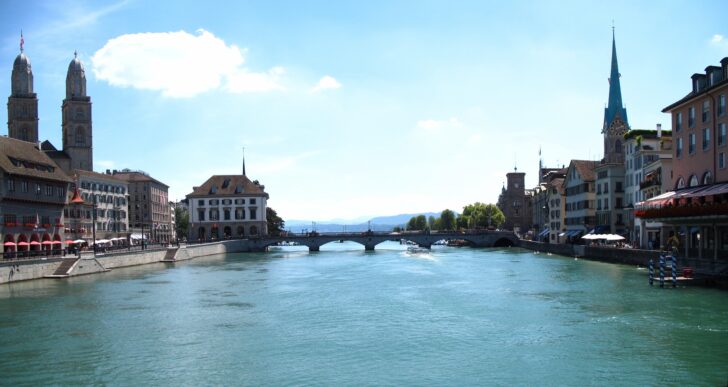Testing on the Limmat to combat plastic in the oceans

This summer, students from ETH Zurich will test various technologies on the Limmat for the automatic removal of waste. The Autonomous River Cleanup project is starting with rivers to tackle the global problem of marine pollution.
Millions of tonnes of waste end up in the world’s oceans every year. Plastics account for the largest share, decaying very slowly and threatening not only marine life and ecosystems, but also our health. Students at ETH Zurich have been working on finding technical solutions to alleviate this problem since 2019 as part of the Autonomous River Cleanup (ARC) initiative. The reason for the focus on rivers is primarily practical in nature. When plastic waste reaches the sea, it becomes much more difficult, if not impossible, to remove effectively, as it spreads widely and breaks down into smaller and smaller particles. “In rivers, the waste tends to be more concentrated and intact, which can make it easier to remove,” explains Fidel Esquivel, ETH Master’s student in Robotics, Systems and Control and a founding member of the ARC project.
Aiming for an efficient and intelligent system
The students have analysed various technologies in the laboratory, which they will now test for the first time in a realistic environment and in interaction with each other. The test facility is located on the Limmat, alongside Zurich’s Platzspitz park. Up until the end of August, the students will examine the following three steps that are central to waste removal: concentration in one place, collection and sorting. In addition, they also aim to assess the quantity and composition of waste in the river by means of cameras at the Walchebrücke. The group will test various approaches for concentrating waste in one place, some of which will be combined – including a floating barrier and a barrier made of air bubbles. The students will use a conveyor belt to collect the material on the test platform, working to determine its optimal alignment. A robotic arm with a camera will separate the waste according to material, with biomass returned to the water. This will show whether the specially programmed deep learning algorithms recognise the objects correctly. Among other things, students will use floating GPS trackers to investigate the routes travelled by the waste. The results of the tests will subsequently be published on the project website.
The ARC project aims to increase knowledge in various areas, including how to quantify waste in bodies of water. The amount of plastic and forms of waste that end up in rivers and oceans is not precisely known, and various studies have reached very different estimates. In addition, the on-site analysis and sorting of waste is a new approach. “As a first step, we want to make sure that biomass can return to the river so that the ecosystem is affected as little as possible. But in the longer term, we aim to separate the waste by material and even by different types of plastic to be able to recycle it,” explains Joachim Schaeffer, a Master’s student in Energy Science and Technology at ETH, who is leading the tests on the Limmat. The ultimate goal is to ensure that the whole system is as energy-efficient and intelligent as possible. This would enable the intensity of the air bubbles and the speed of the conveyor belt to be automatically adapted to suit the detected amount of waste, as Schaeffer explains.
Expansion to more heavily polluted rivers planned
This spot on the Limmat was chosen as the test site for several reasons, one of which is its proximity to the main building and the surrounding ETH laboratories. In addition, there are no boats on this section of the Limmat and swimming is also prohibited. The installation was approved by the Cantonal Office for Waste, Water, Energy and Air. The impact on flora and fauna will be analysed further during the tests.
The results of this test phase will determine how the ARC project develops. The group aims to enhance its system based on the results, and is planning further tests next year on larger, more heavily polluted rivers in Africa, India and Southeast Asia. “The Limmat is not a heavily polluted river,” Esquivel emphasises. “The facility is intended primarily for testing our system rather than for cleaning the river – although we have already filled a few rubbish bags.” ARC is supported by various industrial partners, maintains contact with the University of Natural Resources and Life Sciences in Vienna, and is interested in further partnerships, also on an international scale. The aim is to use those technologies that prove effective to offer individual solutions for different stakeholder groups and local conditions. This could involve clients from both the public and private sectors.
Source: ETH Zurich– Testing on the Limmat to combat plastic in the oceans
Image source: Wikimedia Commons – Andrew Bossi: Limmat an der Münsterbrücke